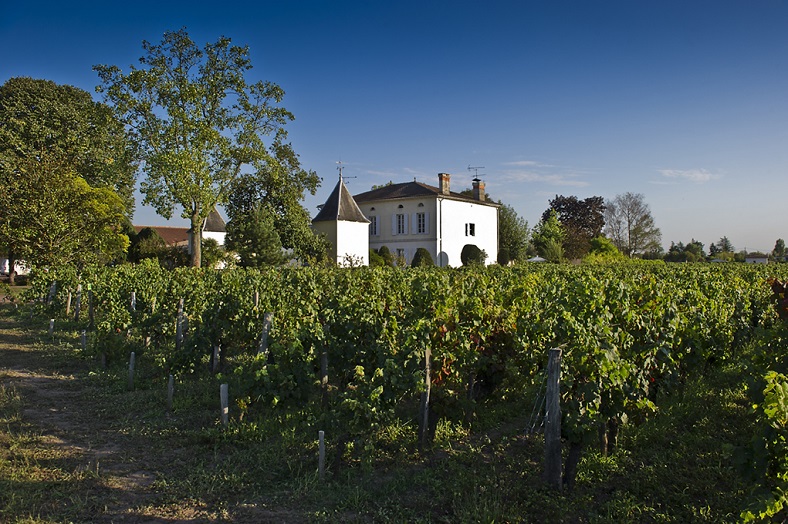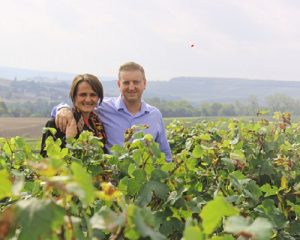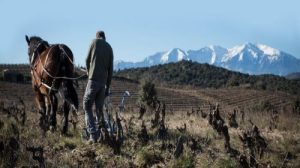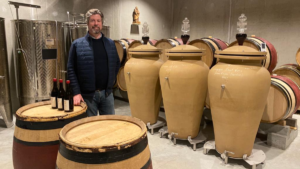
Here we are, within Château Quinault l’Enclos, right in the middle of the city of Libourne. High walls encircle this 16-hectare vineyard, as a vestige of the past when winegrowing and making were close to cities.
For a long time, Alain Raynaud, former president of the Grands Crus Bordelais consortium, owned the estate. In 2008, Baron Frère and Bernard Arnault bought the vineyard. Thanks to the unique savoir-faire and commitment of the Château Cheval Blanc technical team, the estate was completely renewed.
“You need great grapes to make great wines” says Pierre-Olivier Clouet, Château Cheval Blanc’s technical director. A grape cannot be great if its juice does not reflect its terroir. Translating the terroir means having top-quality soil and plants. Since 2008, the Château Cheval Blanc team has worked to improve this last point. The vineyard was precisely mapped. The physical wall of the clos includes five types of soils, mainly gravelly with equivalent quality. According to Pierre-Olivier Clouet, if the soil was defined as in Burgundy, the Château Quinault l’Enclos would be “ranked as a good ‘village’ wine but made by a great wine-grower.” Thanks to ever-improving knowledge of the terroir, the Château Cheval Blanc team has studied the reality of the subsoil. This reality drives each action of the vineyard management: they work deeply the soil so the roots can maximize their development and reflect their terroir in the best way. In the meantime, they have improved the quality of the vines: almost half of the vines were pulled out and replanted in the space of 10 years. Now, 10% is Cabernet, 60% is Merlot and 60% is Cabernet Sauvignon. They use the massal selection technique to guarantee the continuous improvement of their vines.
The wines of Château Quinault l’Enclos reflect Château Cheval Blanc savoir-faire: they harvest the grapes early to keep the freshness and the precision of the fruit. The team doesn’t make any concessions in its choices: sustainable winegrowing, light oak-maturation, perfect ripeness and finally they all try to make a wine “that tastes like where it comes from” and reflects its vintage. The 2014 is fresh, deep and precise. The 2015 is plumper and larger with a typical freshness and balance. The 2016 is the serious one, it has the “austerity of the greats” according to Clouet. Finally, the 2017 is the ideal for those who like fresh, tender and accessible Bordeaux.
Quinault l’Enclos learns a lot from its big brother Château Cheval Blanc. However, this is far from a unilateral relationship, rather a real exchange between the two properties. Château Quinault l’Enclos has become something of a laboratory for the Cheval Blanc team. They try, experiment, and sometimes, they make mistakes on this estate. For instance, they tried to go organic between 2009 and 2012 before realizing that reducing chemical inputs meant massively increasing the the copper content of the subsoils. The work in the two estates and their terroirs complement each other. Lastly, the team is trying to mature wines in oak tanks and not in barriques in order to reduce the oak impact on the wine. They can test here what they wouldn’t be able (economically speaking) to try for Château Cheval Blanc.
Despite the current Bordeaux-bashing, Mr Clouet thinks that no region has improved so much over such a short period of time. Of course, the sustainable wine-growing revolution is going on but there is also a more discrete change, still not completely admitted: the winegrowing and winemaking revolution. In ancient Greek, the word Pharmakon designs both the poison, the cure and the scapegoat. Winegrowing and making have the same mixed sense. Bordeaux is now paying for years of too much control in winemaking and too much intervention in winegrowing, even if most vineyards have been trying to adjust these in recent years. Both Château Cheval Blanc and Quinault l’Enclos refuse to use excessive oak and also excessive sulfite use from maturation in stainless steel vat.
Neither overripe, neither looking for a herbaceous minerality from early harvest, Château Quinault l’Enclos, in much the same way as Château Cheval Blanc, doesn’t follow any trends and strives simply to create the best interpretation of its terroir, producing timeless and eternal wines.
What the guides say about Château Quinault l’Enclos:
Guide Vert de la Revue du vin de France – 1*/3
Located in downtown Libourne, this estate was bought in 2008 by Château Cheval Blanc shareholders Bernard Arnault and baron Albert Frère. Pierre-Olivier Clouet, who is working with Pierre Lurton, now manages the vineyard, trying to improve a historic vineyard. The new team has revealed a naturally elegant wine “which is much more complex than we first thought”, as his director said. The evolution of recent vintages is very impressive.
The wines: since 2014, the wine mature in 500-litre oak vats. The Cabernet Sauvignon planted by the Château Cheval Blanc is now part of the blend. Thanks to this grape, the 2016 has some delicate flowers and cassis aromas with a silky texture, elegant and slightly grained. 2017 is going further in the same direction and truly has the “Cheval Blanc state-of-mind”



